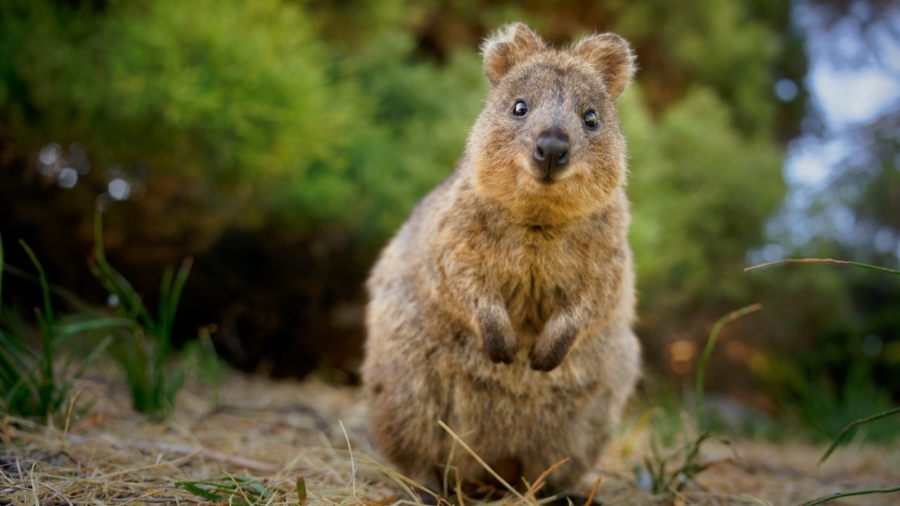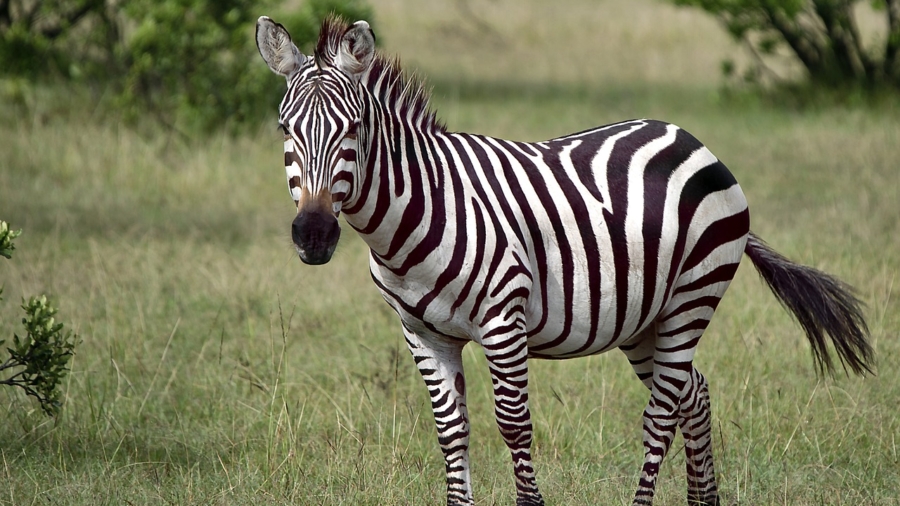Hidden amidst the lush landscapes of Western Australia, the quokka, a small marsupial, captures hearts with its seemingly ever-smiling face and friendly demeanor. This adorable creature, often dubbed “the world’s happiest animal,” has piqued global interest not only because of its photogenic qualities but also due to its unique biological and ecological traits. Delving into the life of the quokka reveals a fascinating story of adaptation and survival in Australia’s challenging environments.
Characteristics / Physical Description
The quokka (Setonix brachyurus) is a small member of the macropod family, which includes kangaroos and wallabies. It stands at about 30 to 40 centimeters in height and weighs between 2.5 to 5 kilograms. The quokka’s dense fur is a blend of brown and grey, providing camouflage in its natural habitat. Its rounded ears, large black eyes, and a short, broad head give it a distinctive, endearing appearance. Despite its small size, the quokka possesses powerful hind legs which it uses for hopping around its territory with ease.
Taxonomy and Classification
The quokka is classified within the kingdom Animalia, phylum Chordata, and class Mammalia. It belongs to the order Diprotodontia, which is primarily composed of marsupials including koalas and wombats. Specifically, quokkas are part of the family Macropodidae, which encompasses various kangaroos and wallabies, highlighting their evolutionary connection to some of Australia’s most iconic animals.
Behavior and Social Structure
Quokkas are nocturnal and crepuscular, meaning they are most active during the night and twilight hours. These marsupials are generally solitary but can be observed in loose social groups when food sources are abundant. They communicate through a series of sounds ranging from sharp chatters to clucking noises, especially in social interactions or when warning others of predators.
Habitat and Distribution
Quokkas are native to small, isolated areas in the southwest region of Western Australia, predominantly found on Rottnest Island and a few pockets of the mainland. Their preferred habitats are dense bushes and woodlands, where moisture is abundant. The environment on Rottnest Island, free from natural predators, has allowed these marsupials to thrive, though their populations are more vulnerable on the mainland.
Diet and Feeding Habits
Primarily herbivorous, quokkas feed on a variety of leaves, grasses, and small shrubs. They have adapted to a high-fiber diet, which is typical for many macropods. Remarkably, quokkas can survive long periods without fresh water by metabolizing the moisture from their food, an essential adaptation to the arid conditions of their habitat.
Breeding and Reproduction
Quokka reproduction is notably influenced by the environment, particularly by food availability. Females can give birth to a single joey at a time, which then lives in the mother’s pouch for about six months. After leaving the pouch, the joey remains dependent on the mother for two more months. This marsupial can delay the development of an embryo until environmental conditions are favorable, a reproductive strategy known as embryonic diapause.
Relationship with Humans
Quokkas have a complex relationship with humans. On Rottnest Island, they are a significant tourist attraction, known for their friendly nature and lack of fear towards humans. However, this has also led to challenges, including negative impacts from human interactions and habitat disturbances. Conservation efforts are crucial to ensure that quokka populations are protected from the threats posed by increased human activity and environmental changes.
Evolutionary History
Quokkas are believed to have diverged from other macropods several million years ago, with their lineage evolving unique traits to adapt to the dense vegetation and limited water sources of their environment. Their evolutionary path reflects a broader story of marsupials in Australia, which have adapted in diverse ways to the continent’s varied ecosystems.
Use as Research Animals
Due to their unique physiological traits, quokkas have occasionally been involved in scientific research. Studies typically focus on their reproductive biology and stress physiology, providing insights that are relevant not only to their conservation but also to understanding similar adaptations in other marsupials.
Ending on a neutral or positive fact about the animal:
The quokka’s resilience and adaptability continue to inspire conservationists and scientists who work diligently to preserve this remarkable marsupial for future generations.


